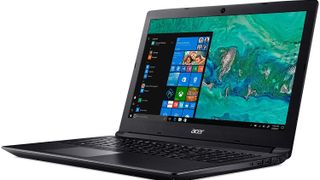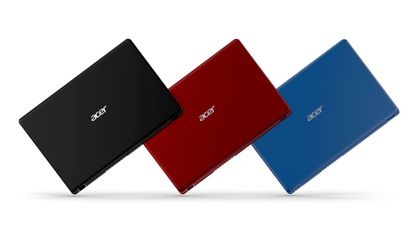The Acer Aspire 3 is Acer's value orientated laptop. Low price; plenty of performance and features. That's a simple proposition. The reality? It's a little more complicated. Mainly that's because of the huge array of configurations available. For starters, you can choose between 14-inch, 15-inch and 17-inch screen sizes. Then there's AMD or Intel CPUs, and plenty of them. Add in storage, memory and even graphics options and there's an awful lot to choose from.
So is the Acer Aspire 3 still worth considering? Let's take a look at what you're getting for your money here, what to look out for, and the best alternatives if you decide it's not right for you. You might also want to head to our best laptops under £500 article for more excellent cheap options – or if your budget is more flexible, our general best laptops guide.
Should I buy the Acer Aspire 3?
Yes, if you can find a configuration that suits your needs at the right price. There are one or provisos to that, mainly centring on screen quality and connectivity, all of which we'll come to.
But certainly there are some models of the Acer Aspire 3 that offer excellent bang for your buck. If you're looking for either absolutely entry-level sub-£300 computing or a cheap way into a laptop with a decent quad-core CPU for under £500, the Acer Aspire 3 should be on your shortlist. Add too many options, however, and the value proposition rather implodes.

What are the specs of the Acer Aspire 3?
In a word, variable. For example, most models run FHD screens with 1,920 by 1,080 pixels, be that 14-inch, 15-inch, or 17-inch. They're also mostly TN rather than IPS. That generally means a less vibrant screen with more narrow viewing angles. However, a few 17-inch models are available either with a 1,600 by 900 TN panel or a 1,920 by 1,080 screen, plus some entry-level 14- and 15-inch models with 1,366 by 768 pixels, an option that seriously reduces usable screen space.
That said, one common theme is the chassis. Across the range, it's an all-plastic affair, as you'd expect at this price point, with slim and fairly light but not truly ultraportable proportions.
From there, we're back to complication. Most but not quite all models have an SSD, with the lower end of the price scale kicking off with a fairly measly 64GB drive. A few models come with either a 1TB or 2TB conventional hard drive, which we'd recommend avoiding.
CPU wise, it's everything from AMD and Intel's low power and low cost chips, up to an Intel quad-core i7 processor, though not quite Intel's latest tech, or a quad-core AMD Ryzen chip, again, from the previous rather than very latest generation.
Connectivity takes the form of a couple of USB 2.0 ports and a single USB 3.1 port in bottom-end 3Gbps spec. There's no USB-C, Thunderbolt or memory card readers. However, you do get HDMI, ethernet and WiFi 5.
Claimed battery life varies by model and ranges from 5.5 to nine hours.
What are the best features of the Acer Aspire 3?
Non-nonsense computing. Spec it right and you get a lot for your money. How about a 15-inch full HD laptop with a 128GB SSD for under £300? Doable with the Acer Aspire 3. Or how about an AMD Ryzen CPU, 128GB SSD, 8GB of RAM and a full HD screen for under £400?
What else do I need to know about the Acer Aspire 3?
Quite simply that there may be some catches. That sub-£300 Acer Aspire 3 with the 128GB and a full HD screen? It only has 4GB or RAM. In other words, choose carefully. There are some great value Acer Aspire 3 configurations... and some terrible ones.
What are the alternatives to the Acer Aspire 3?
Acer's own Aspire 5 is interesting if you want an IPS screen plus USB-C connectivity for a bit more money. See how the two compare in our Acer Aspire 5 vs Acer Aspire 3 faceoff.
Otherwise, you might be interested in the Lenovo IdeaPad 3. It offers broadly similar specs and configuration options for similar money, plus a 4-in-1 memory card reader, but in a slightly more appealing and modern looking chassis. But just like the Acer Aspire 5, you need to be very careful how you spec the Lenovo IdeaPad 3 to ensure good value for money. Head to our Acer Aspire 5 vs Lenovo IdeaPad 3 comparison to help you choose.










